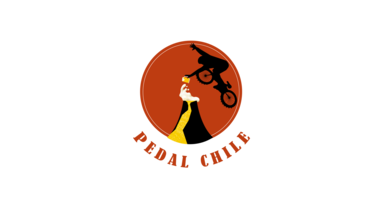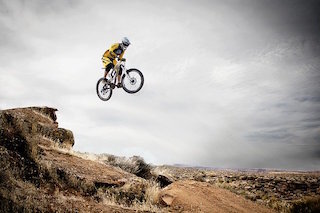what is a bicycle tune?
Many people often ask, ‘what is a bike tune-up?’ Every shop has their own version of a bicycle tune:
No standardization for this service and it varies from shop to shop
Most shops have different levels of tune-ups - However, shops generally offer 3 levels of tuning services usually called something along the lines of:
Standard/Basic Tune-up
Overall inspection of the bike
Brake check
Tire check
Minor adjustments
Deluxe/Full Tune-up
Bike wash
Major wheel truing
Tubeless tire servicing
Installation of all new cables and housing
Complete Overhaul
Complete disassembly of bicycle
Cleaning, re-installation, and adjustment of all component (including the drivetrain)
Suspension servicing is usually NOT included and is a separate service
Bike Wash
Even though there is no universal standardized bike tune service, the above is a fairly consistent description across many bike shops. Similar labeling such as Ground Level Service, Advanced Service, and Elite Service is common to find as shops look to differentiate themselves from their competition.
MTB disc brake
Bike shops make much of their profits from maintenance, repairs, parts, and servicing. While you can certainly find plenty of YouTube videos that offer free advice, most of these videos give you just enough information to get you started….so you can screw things up and bring back to the shop.
The Bike Repair videos that I see on YouTube don’t actually go in-depth enough or explain clearly how to complete the bike repair/tune from start to finish and rarely impart any bike mechanic trade knowledge.
How often should I tune my bike?
“Many variables, from your riding style to geographic location will determine your maintenance requirements. The longer you neglect maintenance, the more it becomes critical. Your bike shop can help you decide your maintenance requirements”
This question is difficult to answer. The Trek Bicycle Corporation Owner’s Manual says it best…..geographic location, riding style, routine maintenance, and cleanings determine your servicing needs/timeline.
However, some general guidelines are recommended in most bicycle owner’s manual:
“It is important to remember that service intervals can vary depending on climate, trail conditions and riding frequency”
Before every-ride check you should perform a mechanical-safety-check:
Tire-pressure, braking system, suspension settings, saddle & seatpost, smooth shifting, chain for lubrication, and frame
Monthly inspection:
Check all bolts are tightened to proper torque specifications
Clean your bicycle
Clean dust seals on your suspension
Check rim/tires/spokes for damage
Every 3 months inspect:
Drivetrain, crank arms, pedals, tire sealant levels, and suspension
Annually you should check:
“Annual servicing at your dealer: overhaul service and inspection of the frame, suspension, and all other components. Repair, service, and/or replace parts as needed.” - - Quote from the Santa Cruz Bicycles owner’s manual
Clean and lubricate all parts and components
These general guidelines will help maintain the performance of your bicycle and prevent more serious mechanical issues from arising. If you’re riding your bike hard and in inclement weather, frequent servicing is mandatory.
Why is it important to understand bike mechanics?
Getting a flat tire out on the trail is only a minor inconvenience if you have the mechanical know-how
It’s important, especially while mountain biking and cycling in remote areas to have at least a basic level of bicycle mechanical knowledge. Can you repair a flat? What if your chain slips or breaks? Dropper post not coming back up? Sudden loss of braking power?
These are just a few of many possible scenarios that happen every day to cyclists and mountain bikers while out on the road/trail.
“Five easy fixes every rider should know. We know not everybody is mechanically inclined ... but every rider should master these five basic skills”
So what are the Five Easy Fixes that Trek Bicycles says ever rider should know?
Inflating and deflating your tires
How to wash your bike
Degreasing and lubing your chain
How to remove and replace your wheels
How to remove and replace your tires
Things you should be doing during an inspection
Squeeze the front brake and rock the bike forward and back. Everything should feel solid…if not chances are you have a loose headset…time for servicing.
Carefully inspect the cables and housing…if you notice any rust, fraying or kinks then it’s time for a replacement.
Lift your front wheel off the ground and swing from side to side. This motion should feel smooth….if it feels rough time to further insect headset.
Take a close look at brake pads and determine how much wear has been inflicted.
Grab one of your pedals and rock it toward and away from the center-line of your bike and repeat with the opposite pedal. If anything feels loose it’s time to service the bottom bracket.
riding style & your mountain bike
“Cyclo-cross bikes are not intended for mountain bike use. Cyclo-cross riders and racers dismount before reaching an obstacle, carry their bike over the obstacle and then remount”
Full-suspension cross-country mountain bikes and hardtail MTBs are not designed for extreme downhill, dirt jumping, or very aggressive/extreme trail riding.
Cross-country and hardtail MTBs are designed to be lighter and faster so you can climb hills and ride longer trails more efficiently.
If you’re riding your hardtail or XC-MTB aggressively by bombing through obstacles and catching air…..just keep in mind that your MTB is going to need more servicing and routine maintenance.
Routine service is essential when riding hard
The only bikes engineered for aggressive riding on rough terrain and true downhill runs are Downhill/Freeride Mountain Bikes.
How to bike maintenance videos - made easy
“Ridden hard and put up wet is no way to treat your mountain bike ”
We offer 2 videos from a master bike mechanic who actually works in a bike shop and will break down each step involved: Our two bike tune videos:
Mountain Bike (MTB): Basic/Standard Tune
Road Bicycle: Basic Tune
Master mechanic Lukas will walk you through the entire process.
All concepts and steps are broken down into plain English
Multiple angles and zoom shots ensure you don’t miss a thing
why do we teach you bike shop quality maintenance and servicing?
We don’t own a bike shop. Instead, we operate a Mountain Bike Tour Company in Patagonia.
We understand the importance of keeping a regular bike maintenance schedule. We find that most people with the right knowledge and skill can perform their own basic bike tune up.
Basic mountain bike tune-up
Mountain bike tune-ups are essential for getting maximum performance and longevity out of your mountain bike. A two-hour ride in the muck and grime causes more damage to your MTB than a month of pedaling on dry pavement.
So what does a Basic or fundamental MTB Tune entail?
Several of our guides at Pedal Chile
Clean your mountain bike properly (more complicated than you think)
This process is important and just understanding this routine preventative maintenance step will prevent many mechanical issues in the future
How to degrease chain, chainring, and cogs
How and where to clamp your mountain bike into the repair stand
Serving tubeless systems
How to replace your tubeless tire, including how to tape the rim
Snugging all parts to your specific bicycle manufacture torque specifications
Components loosen over time from the rigors of trail riding. However, as the bike is already disassembled you will learn to re-assembly your MTB using the exact specs that your bike was designed to be ridden
We also show you how to use a torque wrench
Basic dropper-post maintenance
Basic servicing brakes (both disc and rim)
This is a basic tune that most shops charge $60 and depending on how often and hard you bike, this should be done numerous time per year if you want to keep your bike running like new.
basic Road bike tune-up
While road bikes don’t take the pounding that mountain bikes do. Preventive maintenance is still just as vital since these bikes travel faster with significant higher mileage.
Don’t wait until problems arise as nothing is worse than mechanical issues in the middle of a 50-mile ride.
This 1 hour video will walk you through the entire process just like our Complete Mountain Bike Overhaul Video. The difference is this video is specific to road bikes and includes:
How to properly and safely secure your bike in your bike repair stand
Very important, especially when working on carbon bikes
How to properly wash your road bicycle
The importance of this step cannot be emphasized enough and will save you much money and problems down the road
The complete disassembly of your bicycle
Once your bicycle is completely disassembled you’re able to do a complete and thorough cleaning
Inspecting all the components of your road bike
Front and rear derailleur servicing and adjustments
Basic disc and rim brake servicing
Replacing handlebar grips and wrapping
How to check for loose bolts and tighten to spec
These videos don’t teach you how to bleed brakes, tru a wheel, change your cable housing, rebuild your suspension, as these require significantly more mechanical skill and specialized tools.







